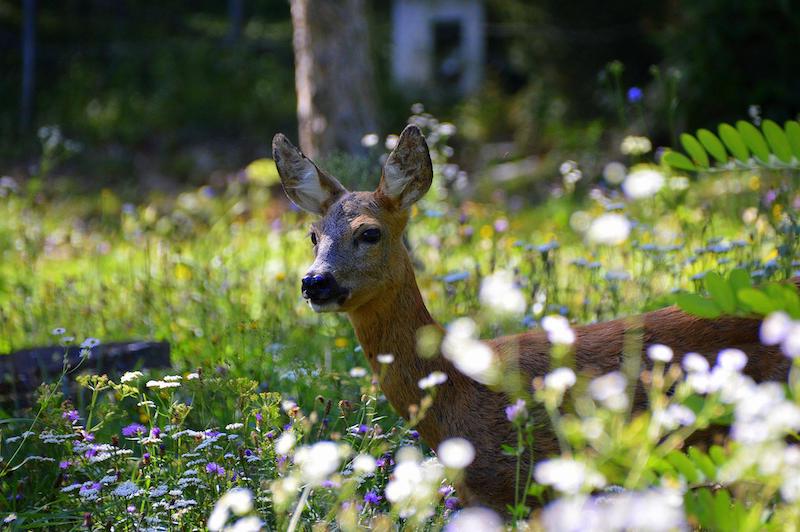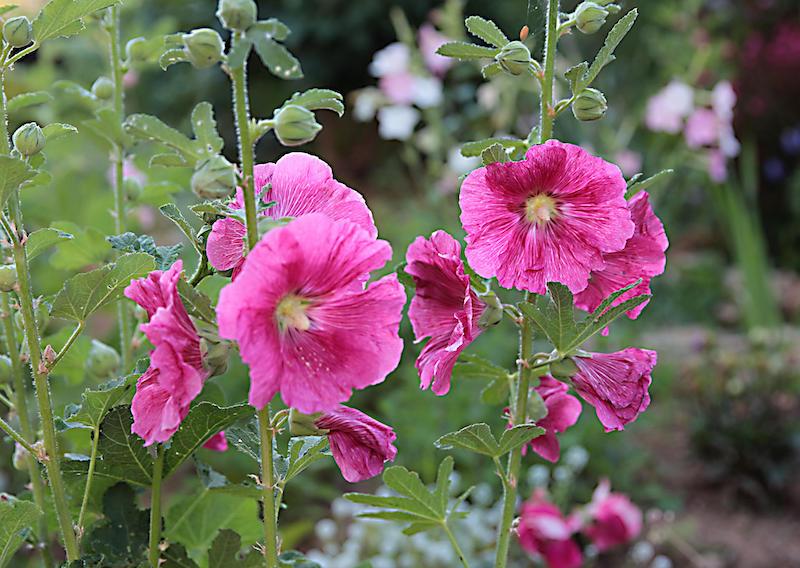Alcea or Hollyhocks are a gardener-favorite flowering beauty that deer and other foraging animals do not generally bother. This plant is an herbaceous perennial, which means all of the growth dies back when the weather turns cold, and a new plant emerges in the spring. Desperate animals eat just about anything, so Hollyhocks may fall victim to hungry animals. Fortunately, there are abundant food sources when Hollyhocks are actively growing, so animals tend to leave them alone in favor of other plants.

According to Rutgers University, this plant is Occasionally Severely Damaged on their rating scale from Rarely Damaged to Frequently Severely Damaged.
| Rarely Damaged |
| Seldom Severely Damaged |
| Occasionally Severely Damaged |
| Frequently Severely Damaged |
Keeping Deer Away From Hollyhocks
The best way to keep deer away from Hollyhocks is to feature the plants in an area that is difficult to reach or not hospitable to wild animals. It is challenging to build a deer-proof fence, but simply having a fenced-in yard may be enough of a deterrent. Plant Hollyhocks near a door or frequently used patio, and the routine presence of humans and pets may be enough to keep the deer away.

Will Hollyhocks Come Back After Deer Eat Them?
Hollyhock plants may come back after deer eat them. Plants that sustain a lot of damage may not recover, but plants that have minimal damage may continue to grow. Hollyhock plants only last a few growing seasons, and the plant tends to self-seed. Significant deer damage may be a setback for one year, but as long as the plant was able to set seed, Hollyhocks can return the following year.
Sources: Rutgers New Jersey Agricultural Experiment Station ‘Landscape Plants Rated by Deer Resistance’ 2018
 |
Author Alison Cotsonas - Published 08-11-2022 |
